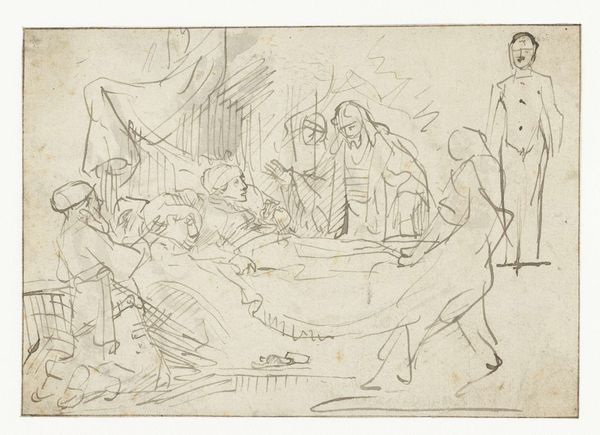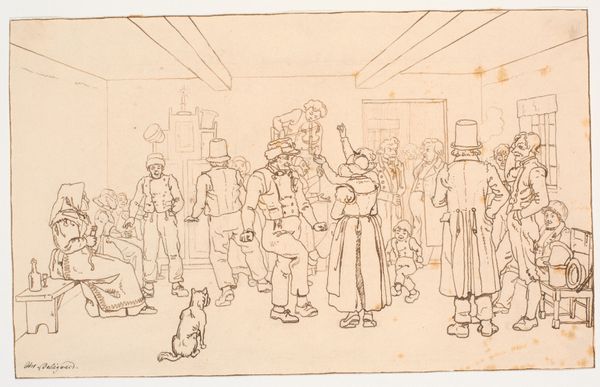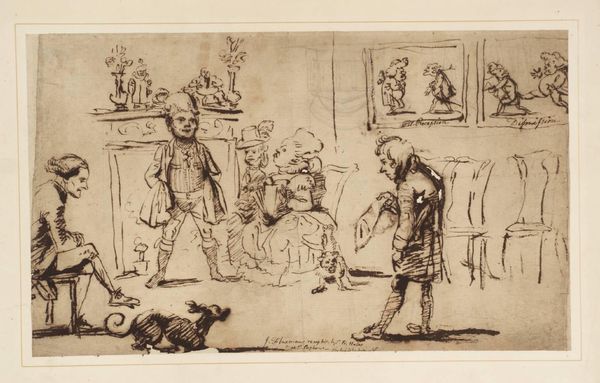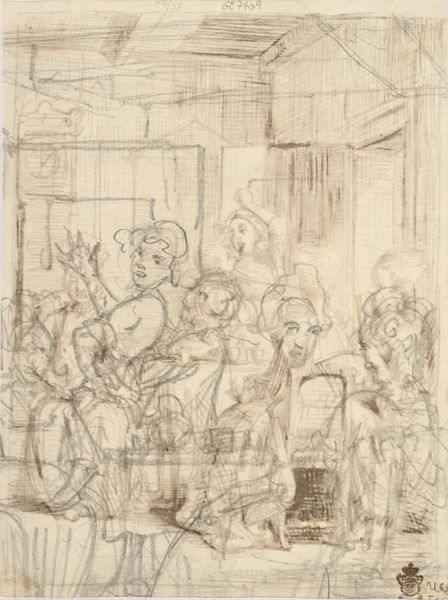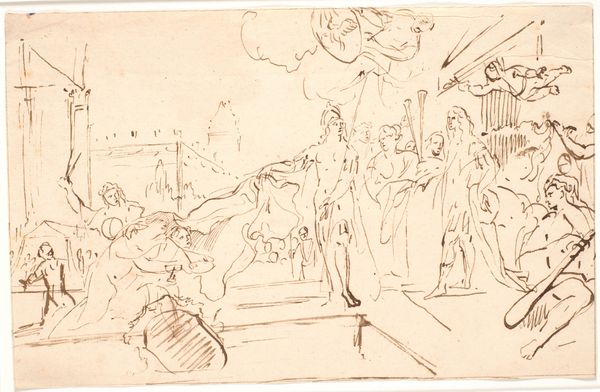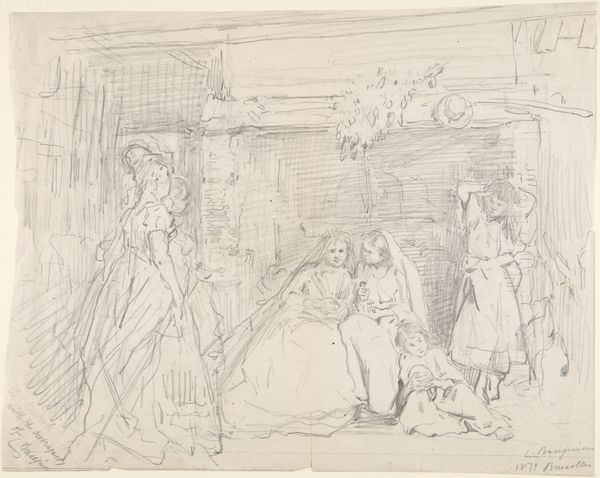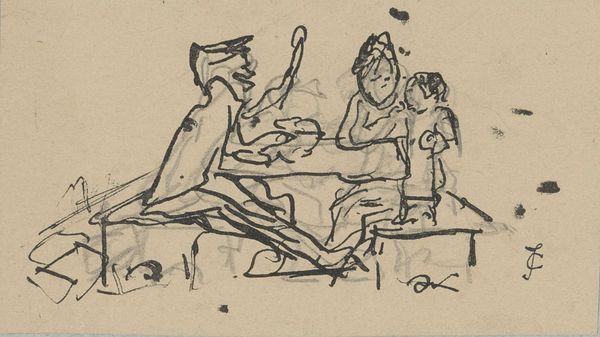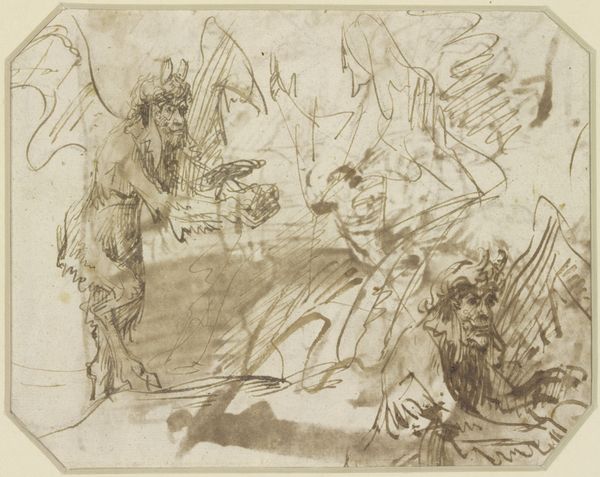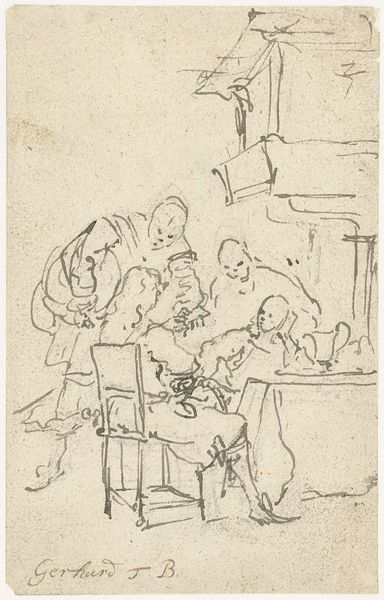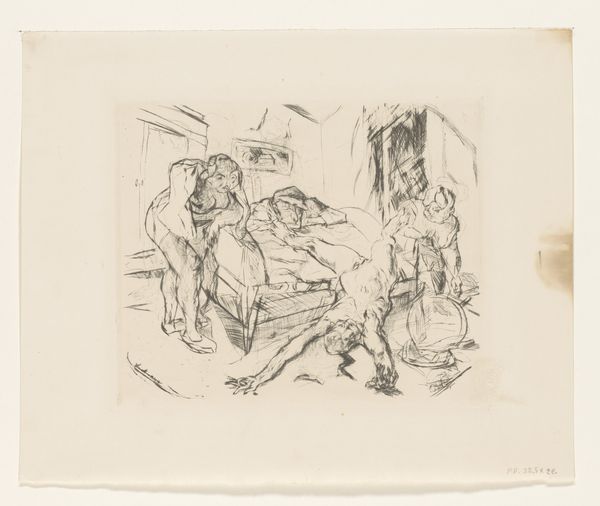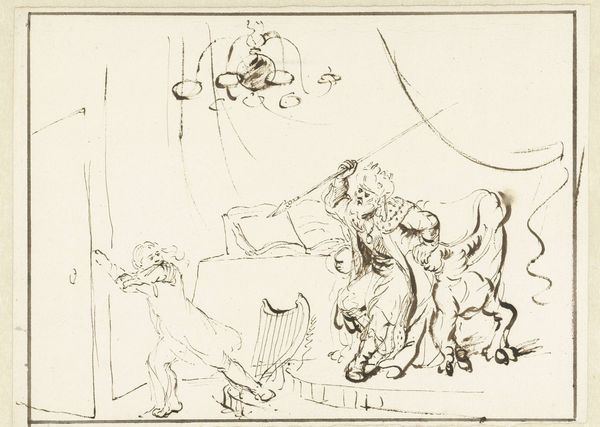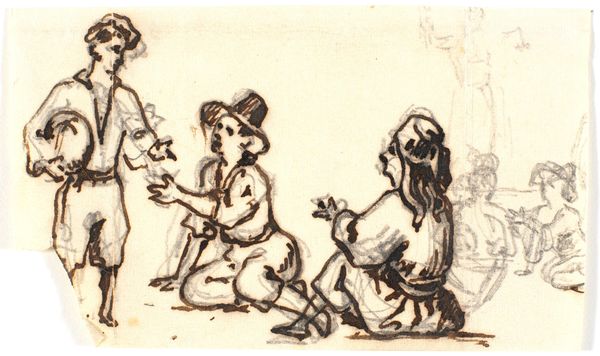
drawing, print, paper, ink, pen
#
drawing
#
narrative-art
#
ink painting
# print
#
caricature
#
figuration
#
paper
#
ink
#
pen
Dimensions: 112 × 176 mm
Copyright: Public Domain
Curator: Look at this whimsical pen and ink drawing; a study for a title page from Punch, Volume 55, dating back to 1868, by Charles Samuel Keene. Editor: Oh, I love the energetic, scratchy lines! It feels spontaneous, like catching a fleeting thought. Is that a play unfolding? Curator: Precisely! It seems to be a rehearsal, a scene from a play with various figures adorned in theatrical costumes, and yes, there’s even a little dog observing from the lower section. Notice the material realities embedded here. The relatively inexpensive nature of pen, ink, and paper democratized image-making, allowing for the rapid dissemination of social commentary through publications like Punch. Editor: The costumes, the stage, even the ink itself – they are all materials performing their roles! It is really cool, each quick stroke loaded with purpose. I can feel the pulse of the theater and the artist's hand. But the composition seems almost... improvised? Curator: Indeed, that seeming improvisation is key to the artwork's success. The visible layering of lines, achieved through cross-hatching with a pen, wasn't about creating something ‘perfect’. It was meant for reproductive techniques. These marks allow it to translate through printing, thus creating wider social availability. Editor: You are right; it really makes you think about the Victorian public absorbing this imagery weekly! And now, viewing this material from today, it's a direct link to their era, you can also make out '68 on the right side. Makes me consider the conversations it stirred in its original setting. Curator: Well said. By appreciating the intersection of materials, labour, and social satire here, one starts to appreciate Keene’s artwork outside the usual restrictive "high art" categories. The essence is about accessibility and critical reflection, captured beautifully by a deceptively simple drawing process. Editor: Right! So much more than just "a drawing," it is a witness to a time, an event, a way of life. Curator: Indeed! So next time you view art, ask: what dialogues are happening? Then look closely: what did the artist use to make the artwork, and perhaps most significantly, who was it meant to be consumed by.
Comments
No comments
Be the first to comment and join the conversation on the ultimate creative platform.
